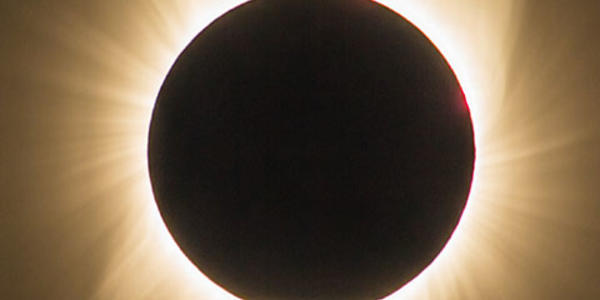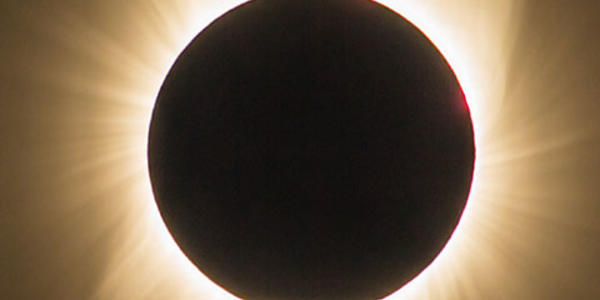DMSP SSJ/4 data provide a complete energy spectrum of the low energy particles that cause the aurora and other high latitude phenomena. The data set consists of electron and ion particle fluxes between 30 eV and 30 KeV recorded every second, satellite ephemeris and magnetic coordinates where the particles are likely to be absorbed by the atmosphere. Differential particle fluxes may be as large as 1010 at the lowest energies. The detectors also record high energy ions that penetrate both the satellite and the instrument. This is most noticeable in the South Atlantic Anomaly and at the "horns" of the radiation belts.
Instrument Description
The SSJ/4 instrument was designed to measure the flux of charged particles as they enter Earth's upper atmosphere from the near-Earth space environment. It consists of four electrostatic analyzers that record electrons and ions between 30 eV and 30 KeV as they flow past the spacecraft toward Earth. The instruments "look" toward the satellite zenith. The curved plate detectors allow precipitating electrons and ions to enter through an aperture of about 20 by 100(FWHM). Electrons and ions of the selected energy are deflected toward the target by an imposed electric field applied across the two plates. The two low energy detectors consist of 10 channels centered at 34, 49, 71, 101, 150, 218, 320, 460, 670, and 960 eV. The high energy detector measures particles in 10 channels centered at 1.0, 1.4, 2.1, 3.0, 4.4, 6.5, 9.5, 14.0, 20.5 and 29.5 KeV. Each detector dwells at each channel for 0.09 seconds from high energy channel to low. A complete cycle is sampled each second. The nominal response efficiency is 50% at a value of 10% of the central energy for that channel. The instruments are built by Amptek Inc. (formerly Emmanuel College) under contract from the Space Physics Division of Phillips Laboratory and calibrated at Rice University.
DMSP satellites are in a sun-synchronous, low altitude polar orbit. The orbital period is 101 minutes and the nominal altitude is 830 km.
Processing
Processing of the SSJ/4 archive data occurs onboard the satellite and at NGDC. From November 1996 to present, data is received from AFWA on a T-1 line in simple format. The data logger is queried by the OLS computer once a second and the data are placed in the LS SSP block. The counts are compressed such that the percent change between values is relatively constant. At NGDC, the LS SSP data are de-commutated, deinterleaved, edited, reordered and restructured. The resulting counts are converted to differential number flux in units of electrons per cm2 per second per steradian per eV and the resulting values are quality controlled. Satellite ephemeris are computed using a four body orbital mechanics model and observed orbital elements rather than predicted ones. Magnetic coordinates are computed for the foot of the magnetic field line that passes through the satellite down to 110 km altitude using Tsyganenko 1990 and are added to the satellite ephemeris.
Applications
DMSP SSJ/4 data have been used primarily in space physics research, monitoring the space environment and space weather forecasting. These data have been used to study the electron and ion features of the aurora [Snyder et al., 1976 and numerous other authors], and to characterize or model the polar cap [Meng and Kroehl, 1978], the polar cusp [Candidi et al., 1981], the auroral zone [Hardy et al., 1985; Kroehl et al., 1991] and the South Atlantic Geomagnetic Anomaly [Buhmann and Kroehl, 1982]. They are used to define the equatorward boundary of the auroral zone, to specify the structure of the high latitude ionosphere and neutral atmosphere, and to investigate the cause of satellite anomalies.
Archives
NGDC has received DMSP precipitating electron and ion data since March 1975 from sensors SSJ/2, SSJ/3 and SSJ/4 on satellites 31, 32, 33, F-1, F-2, F-3, F-4, F-6, F-7, F-8, F-9, F- 10, F-11, F-12, and F13. Processed data from March 75 to December 92 was received from AFWA on magnetic tape. Since March 9, 1992 we have received raw satellite data. Archive tapes are organized by satellite- orbit and they contain an automated format statement, an inventory, header information for each orbit and data records. Each data record consists of the satellite ephemeris in geographic and geomagnetic coordinates and 4 one-second-values in units of differential particle flux for the 40 channels.



